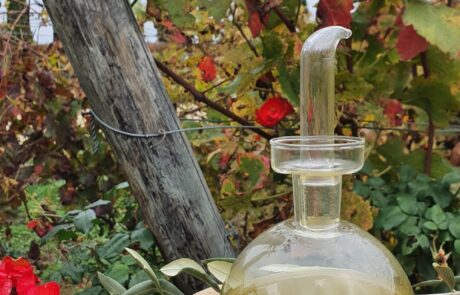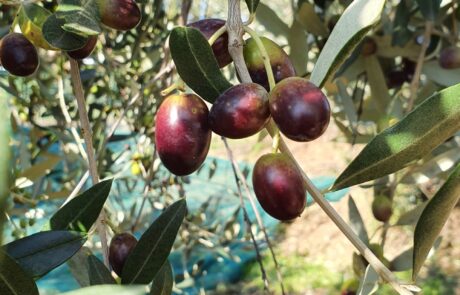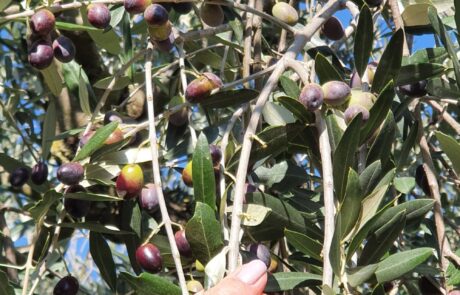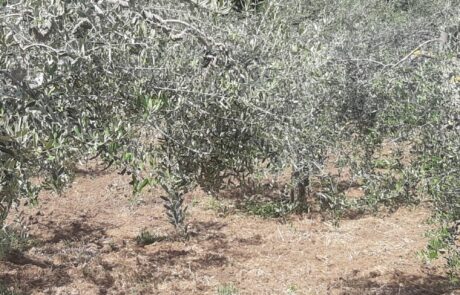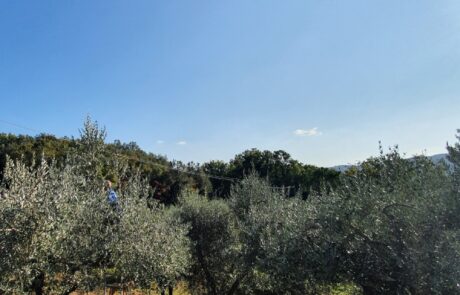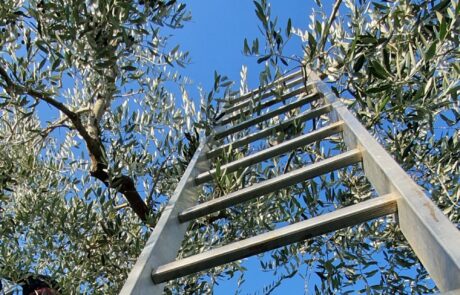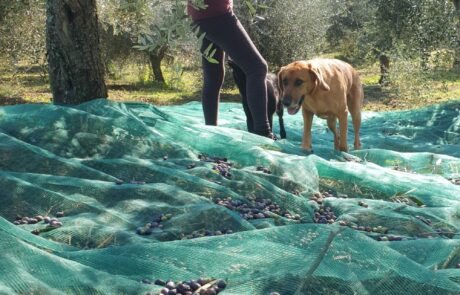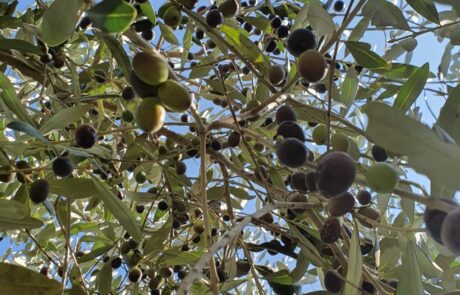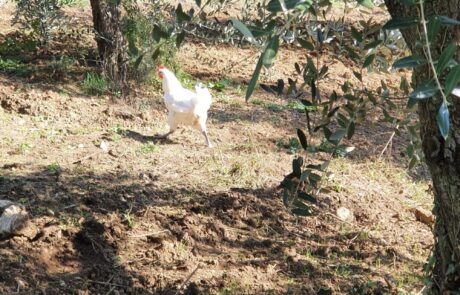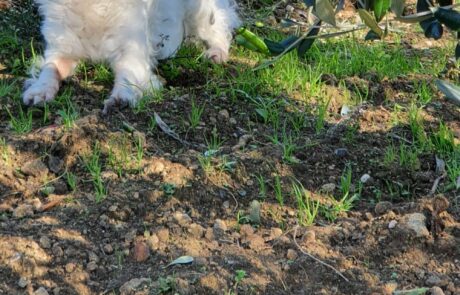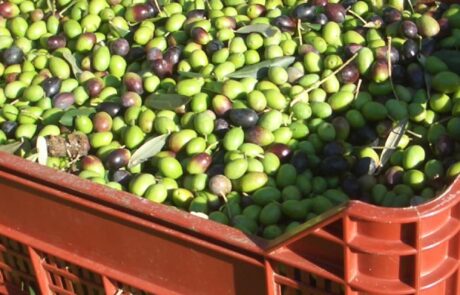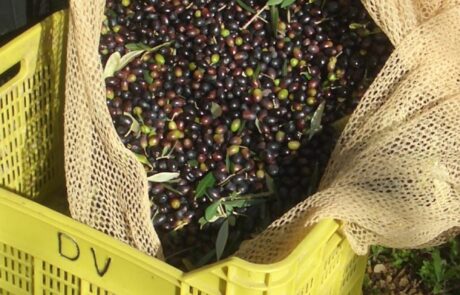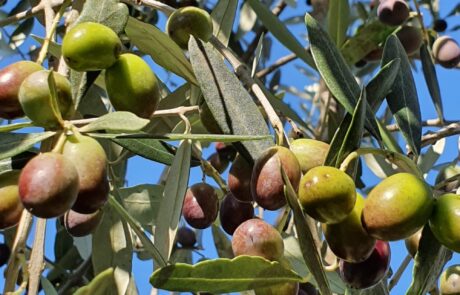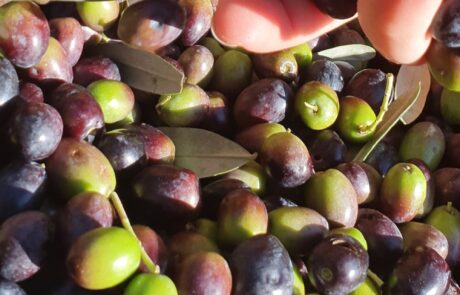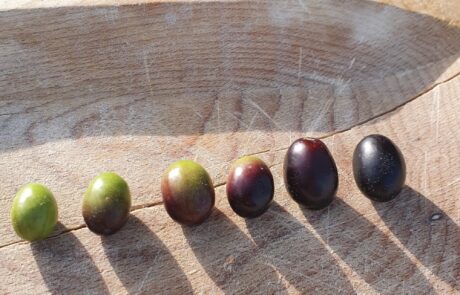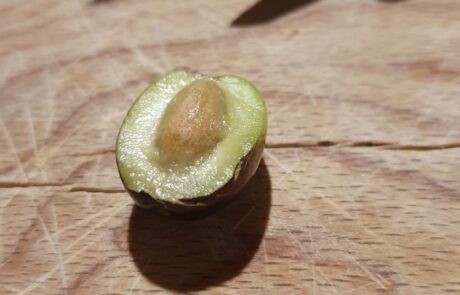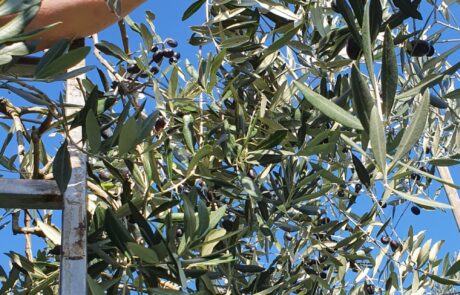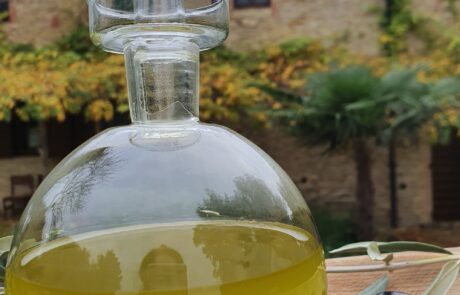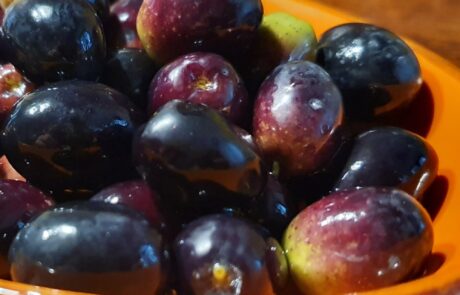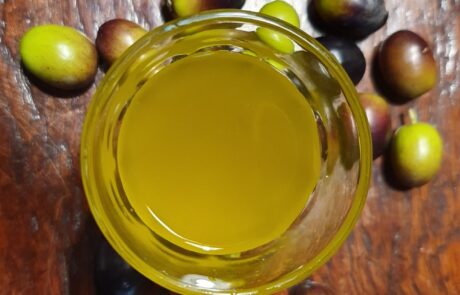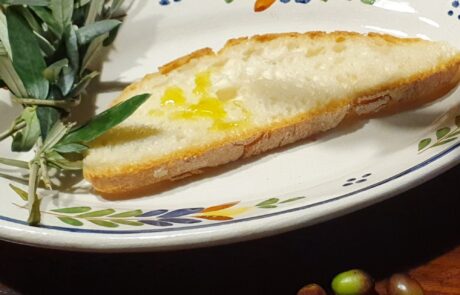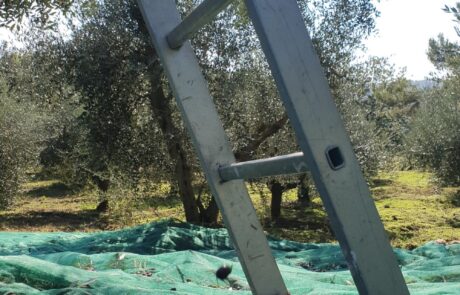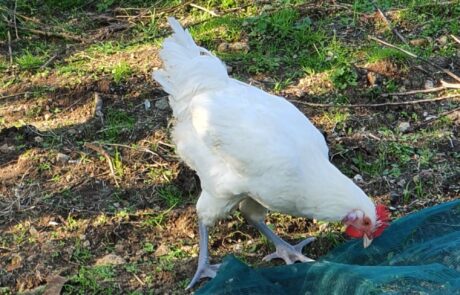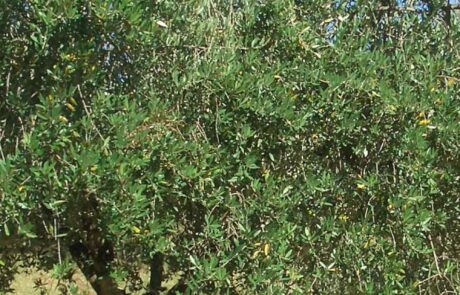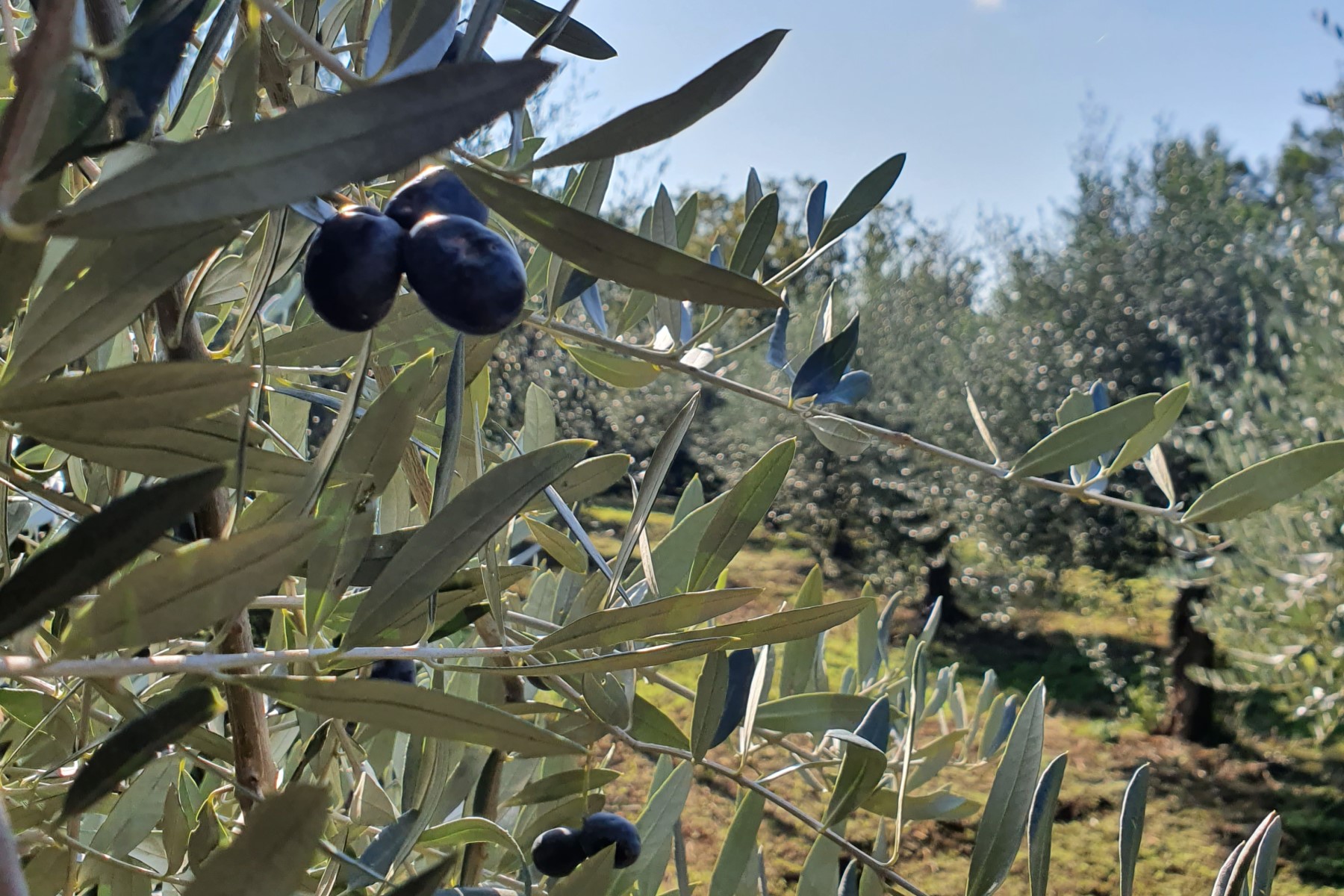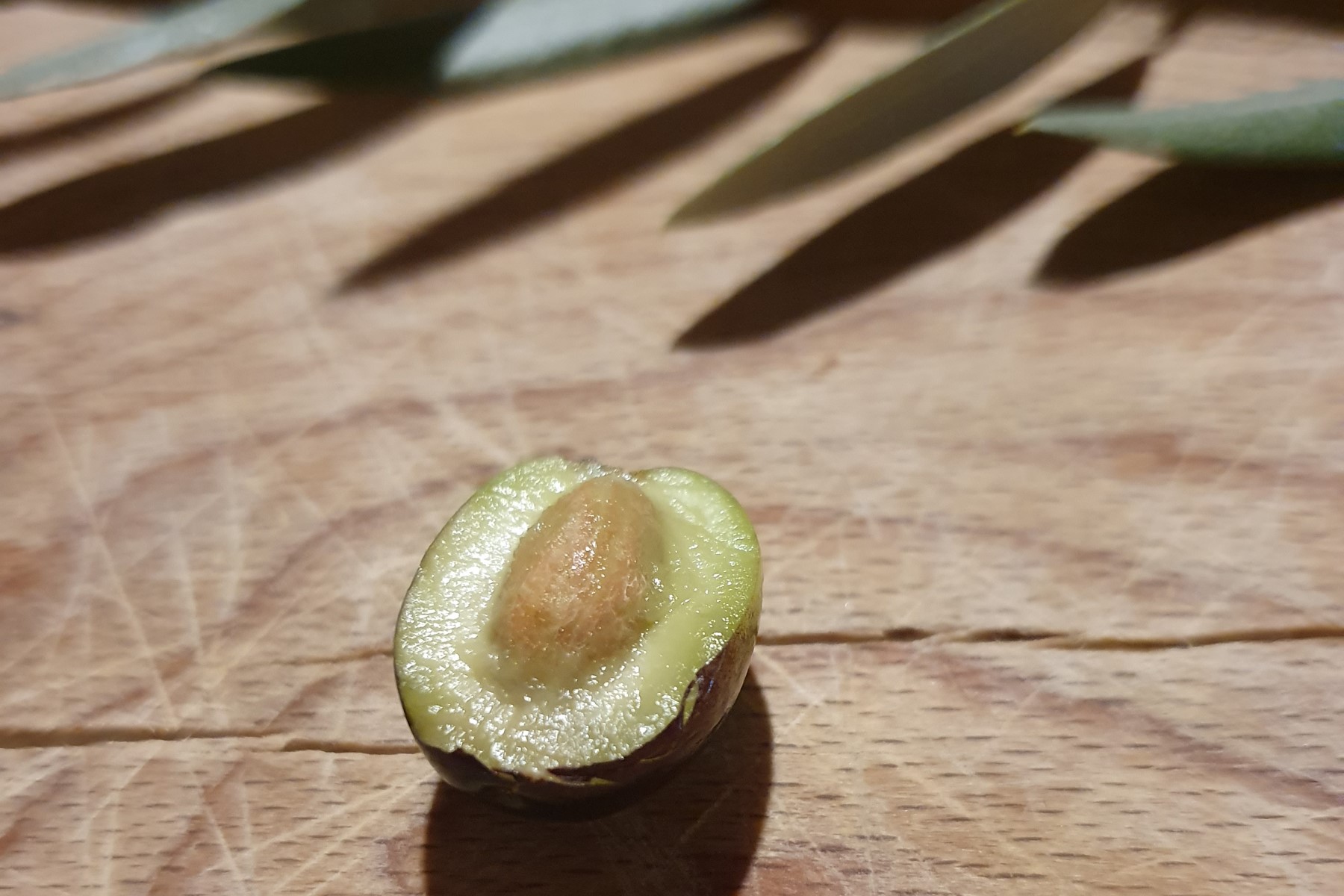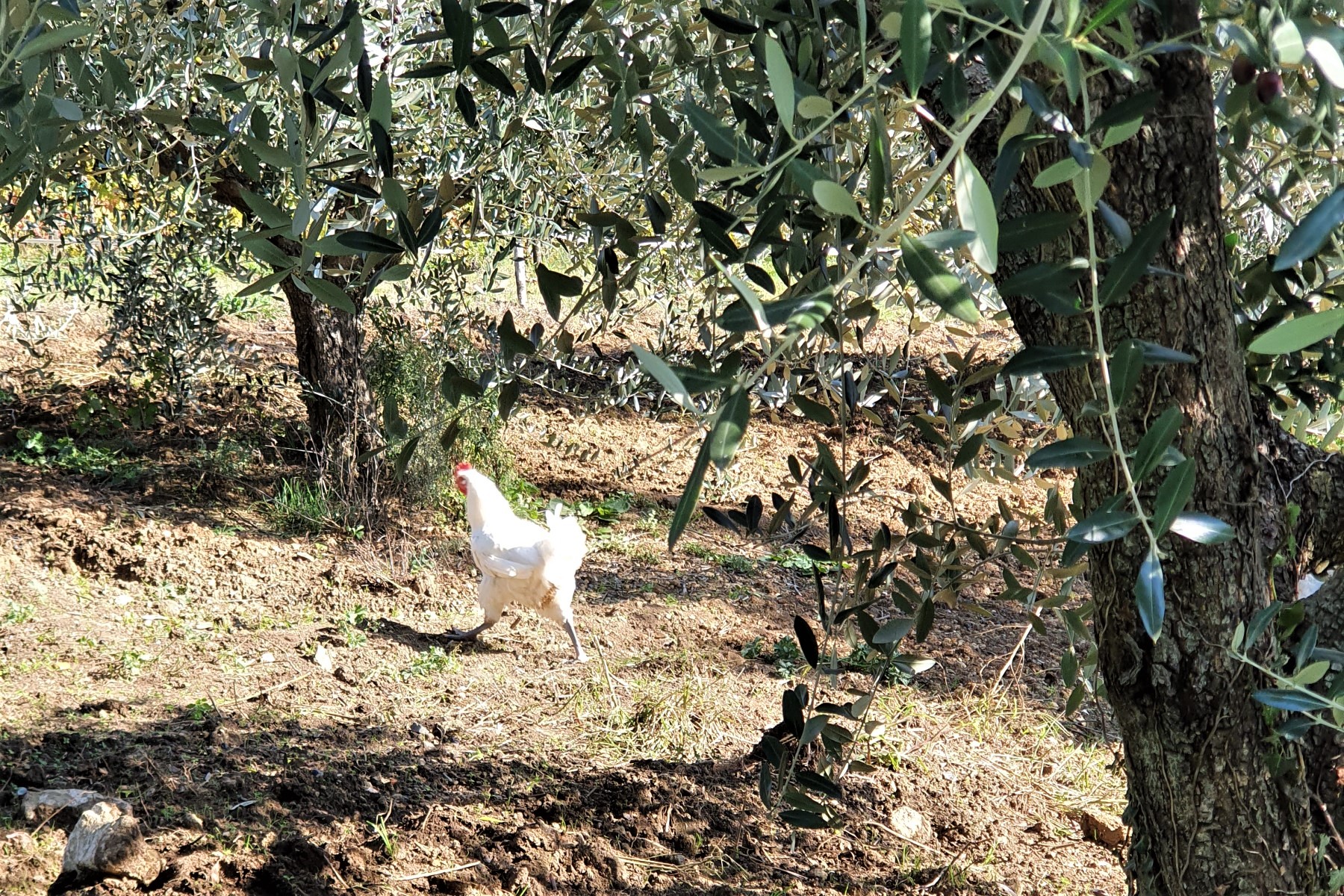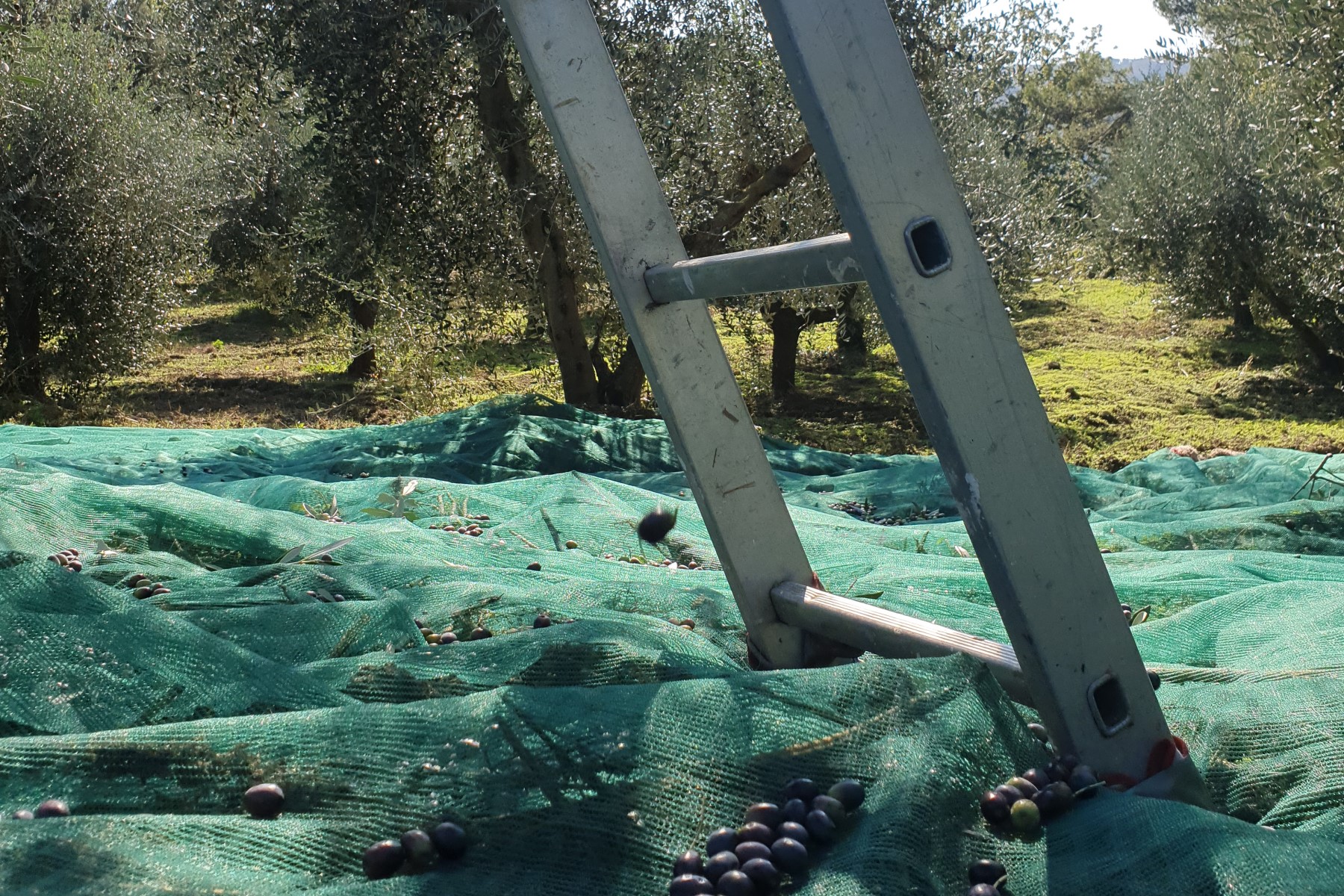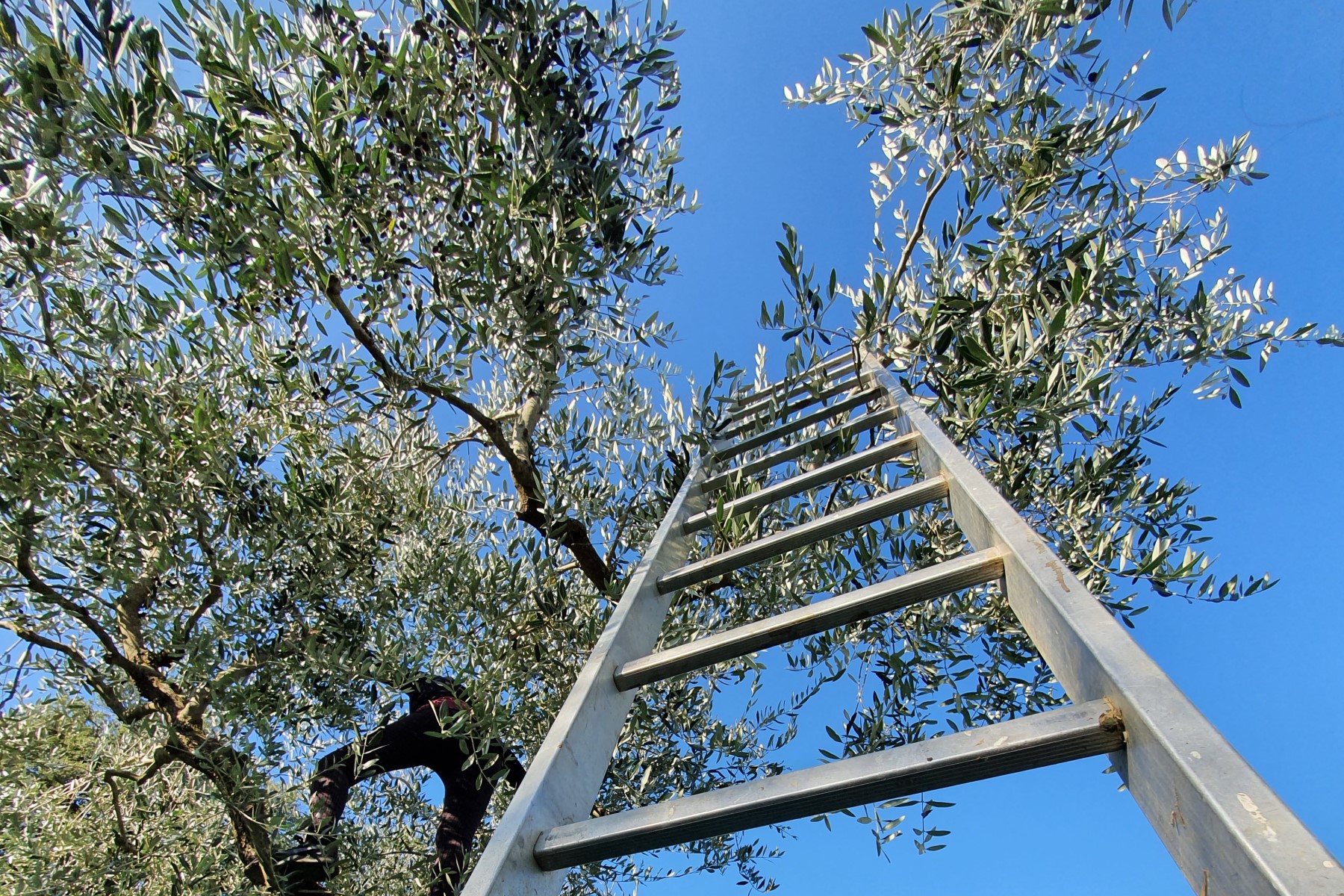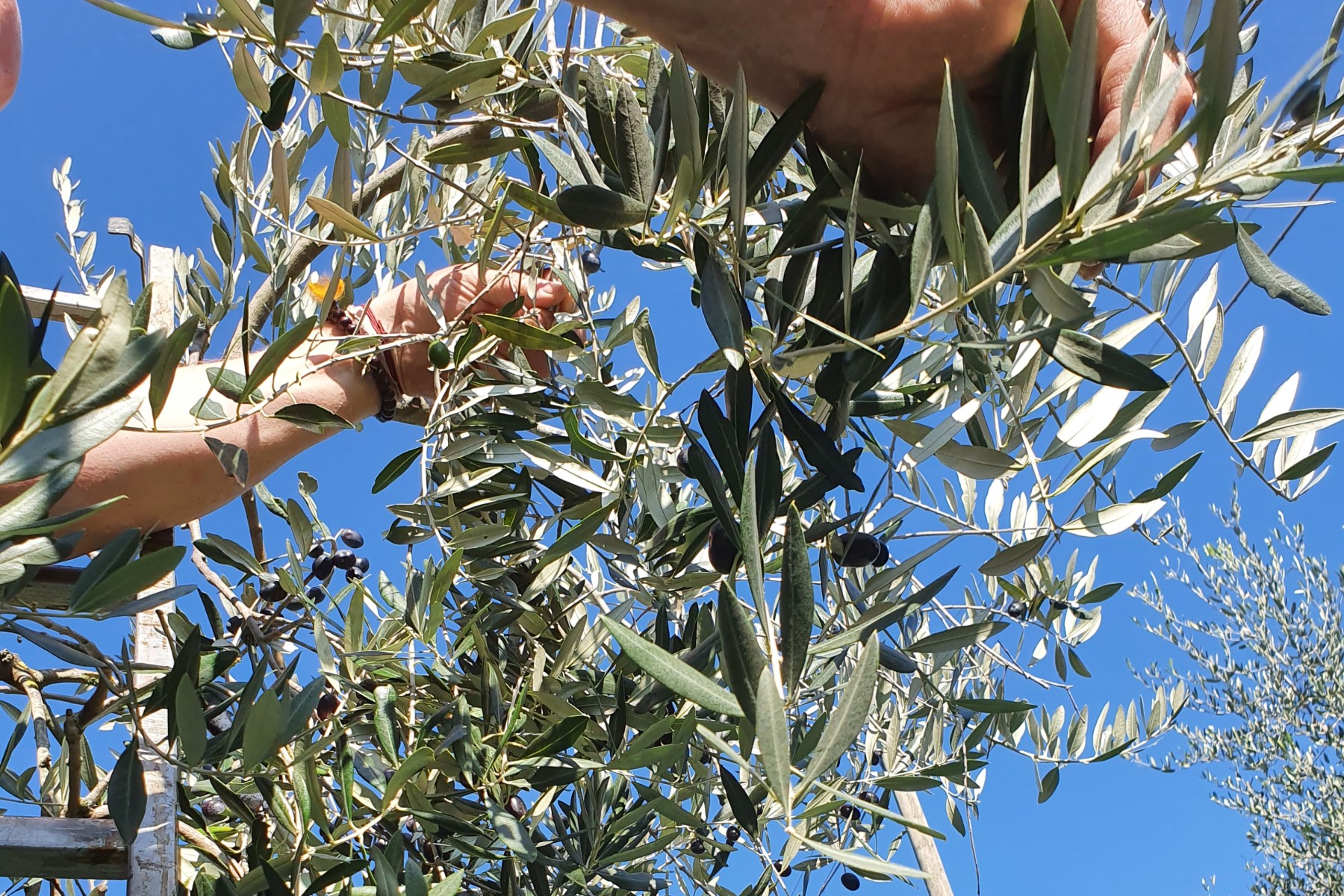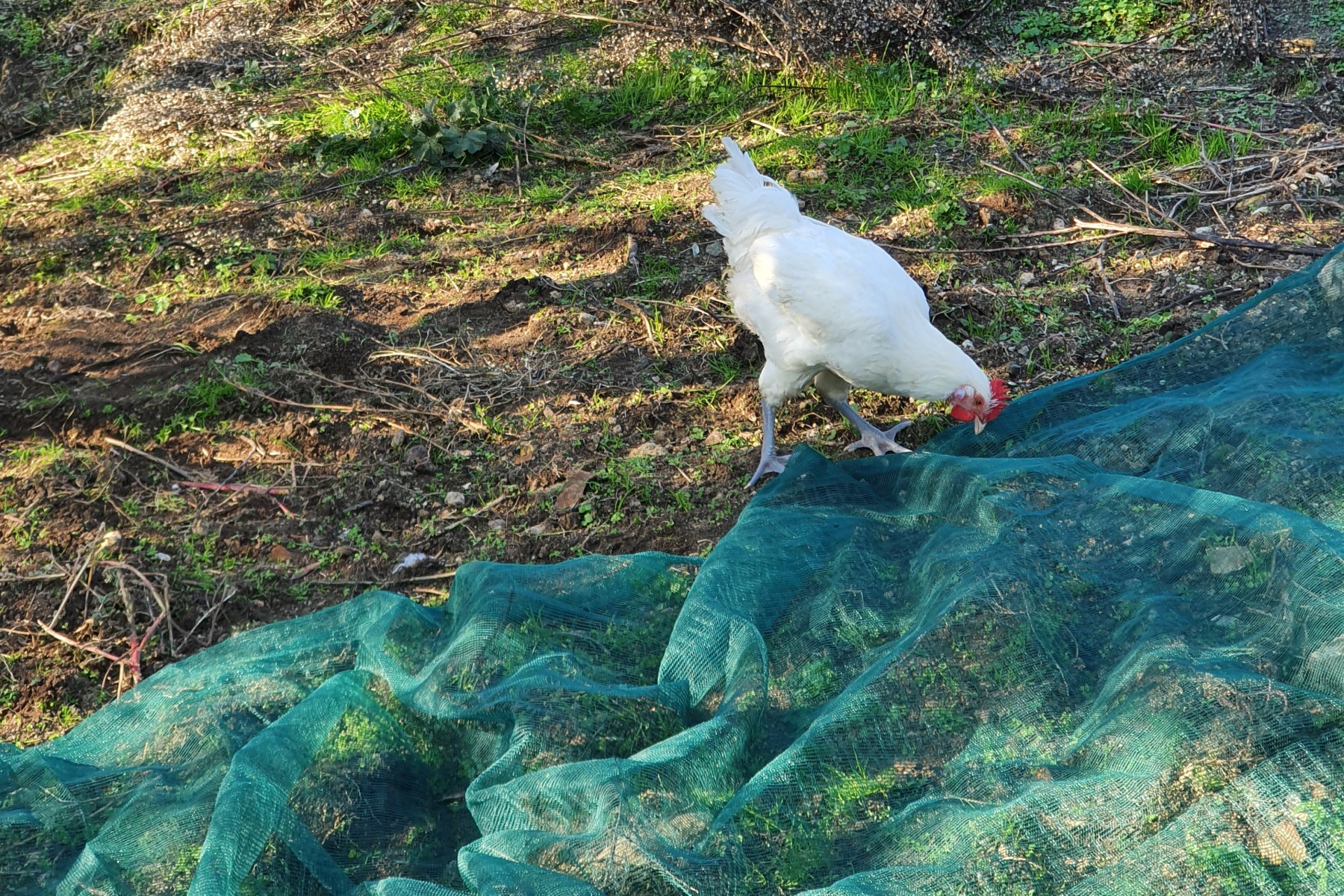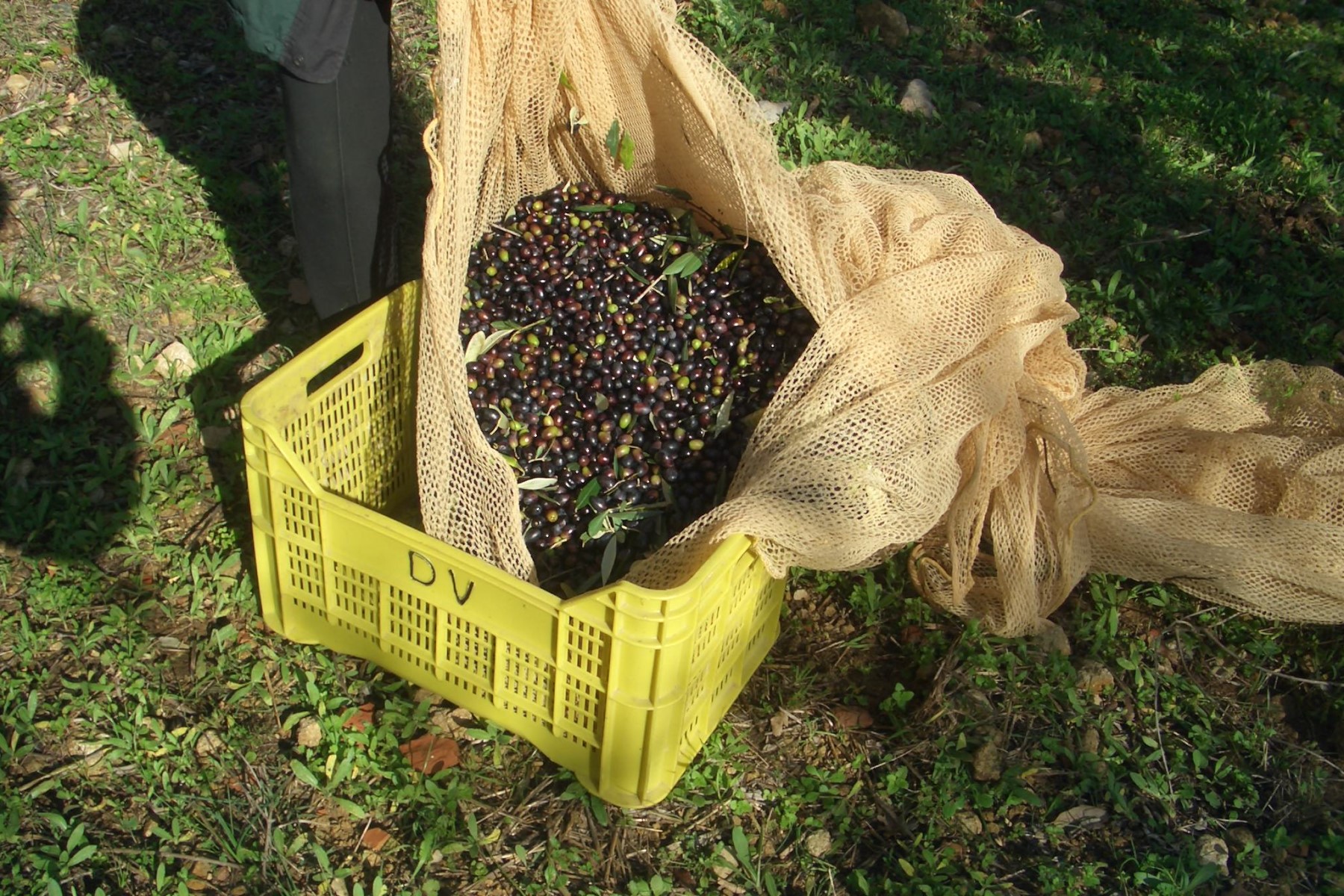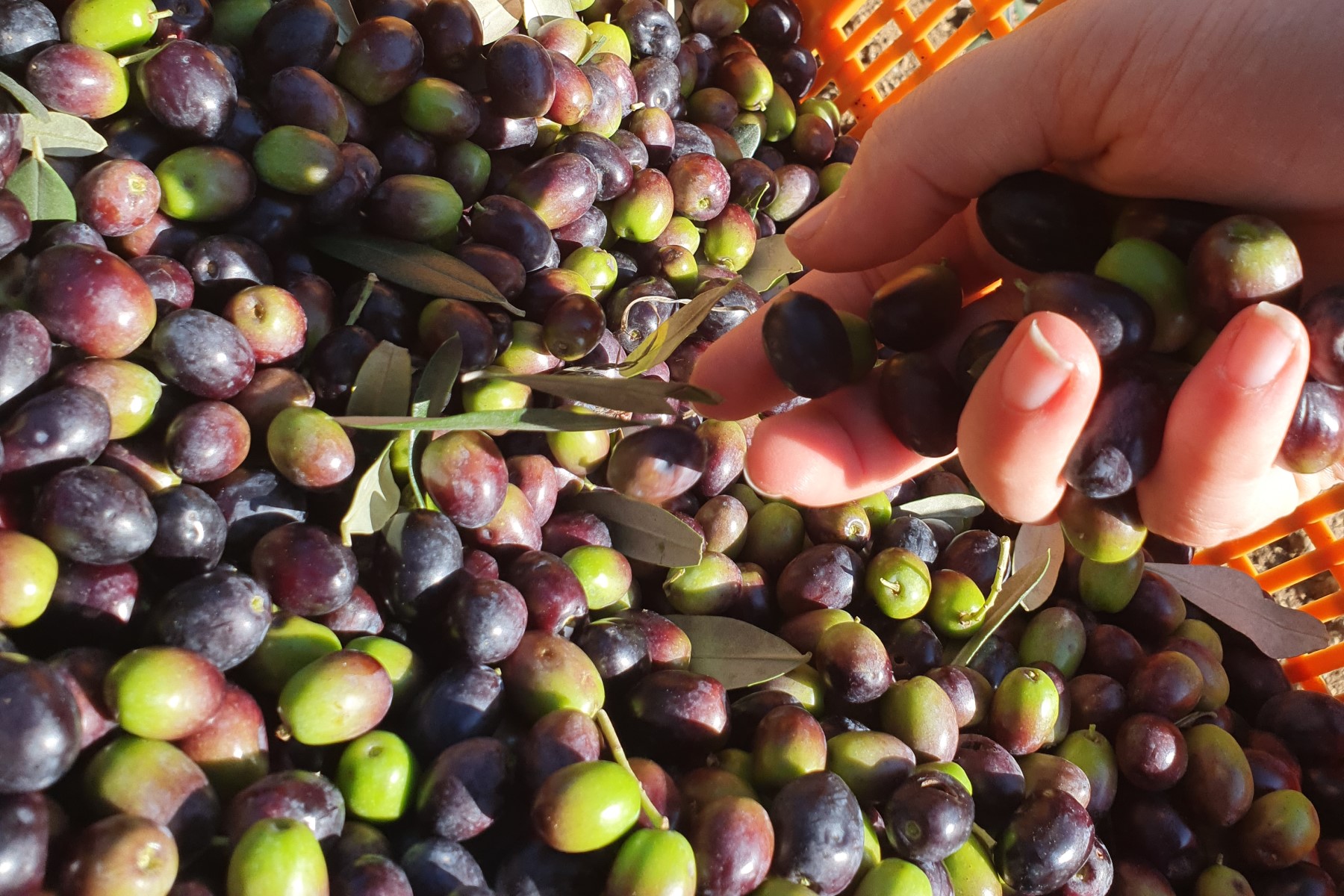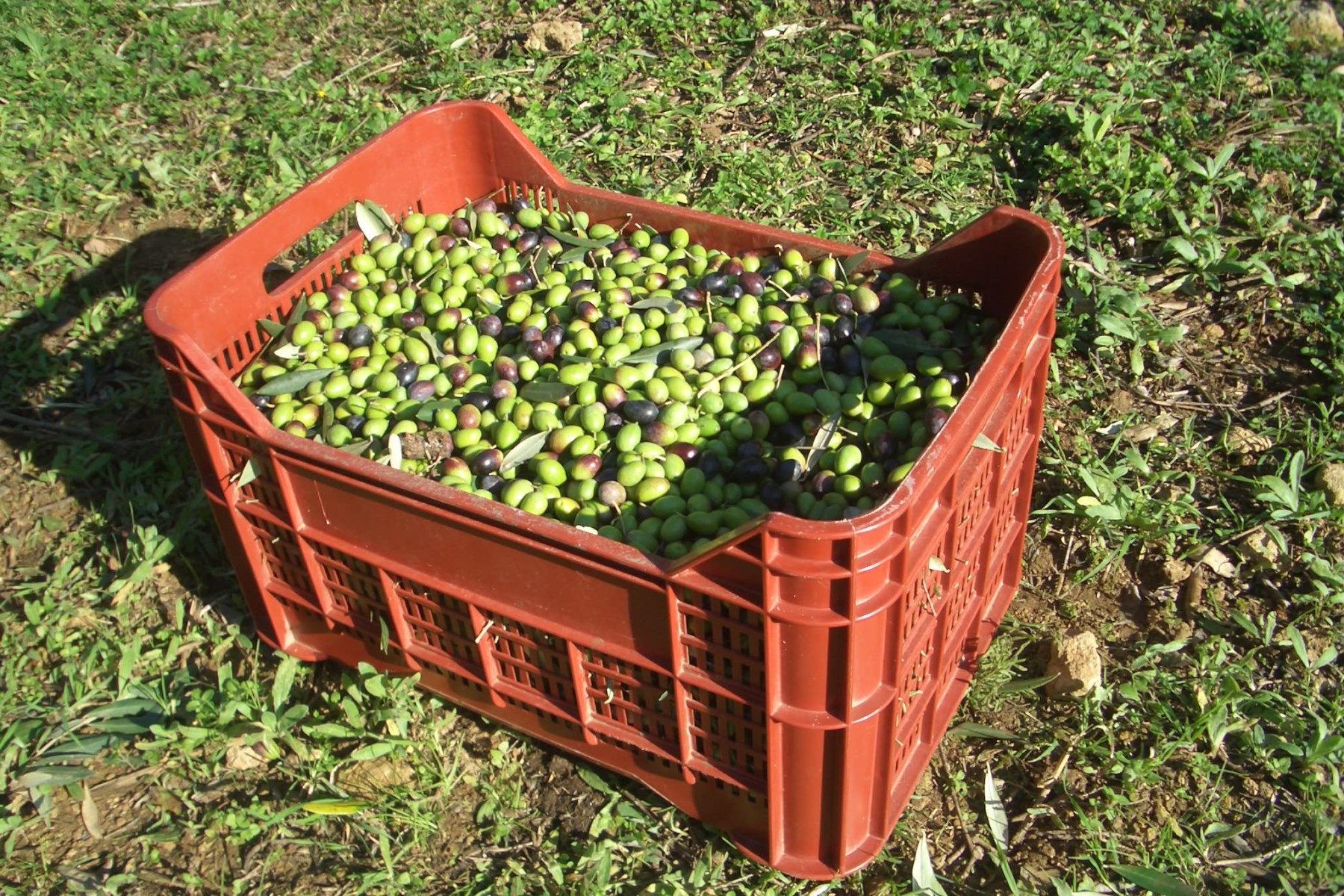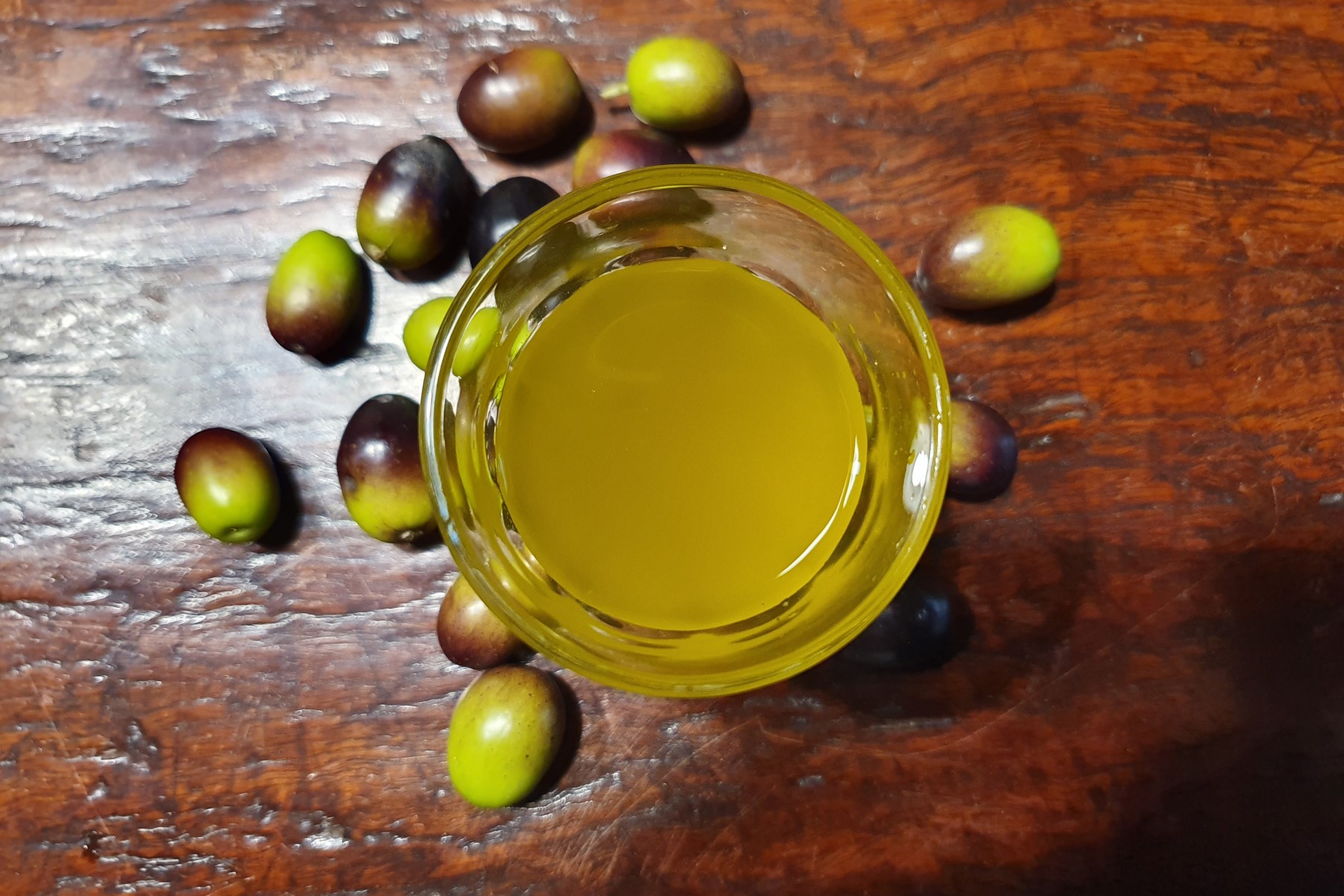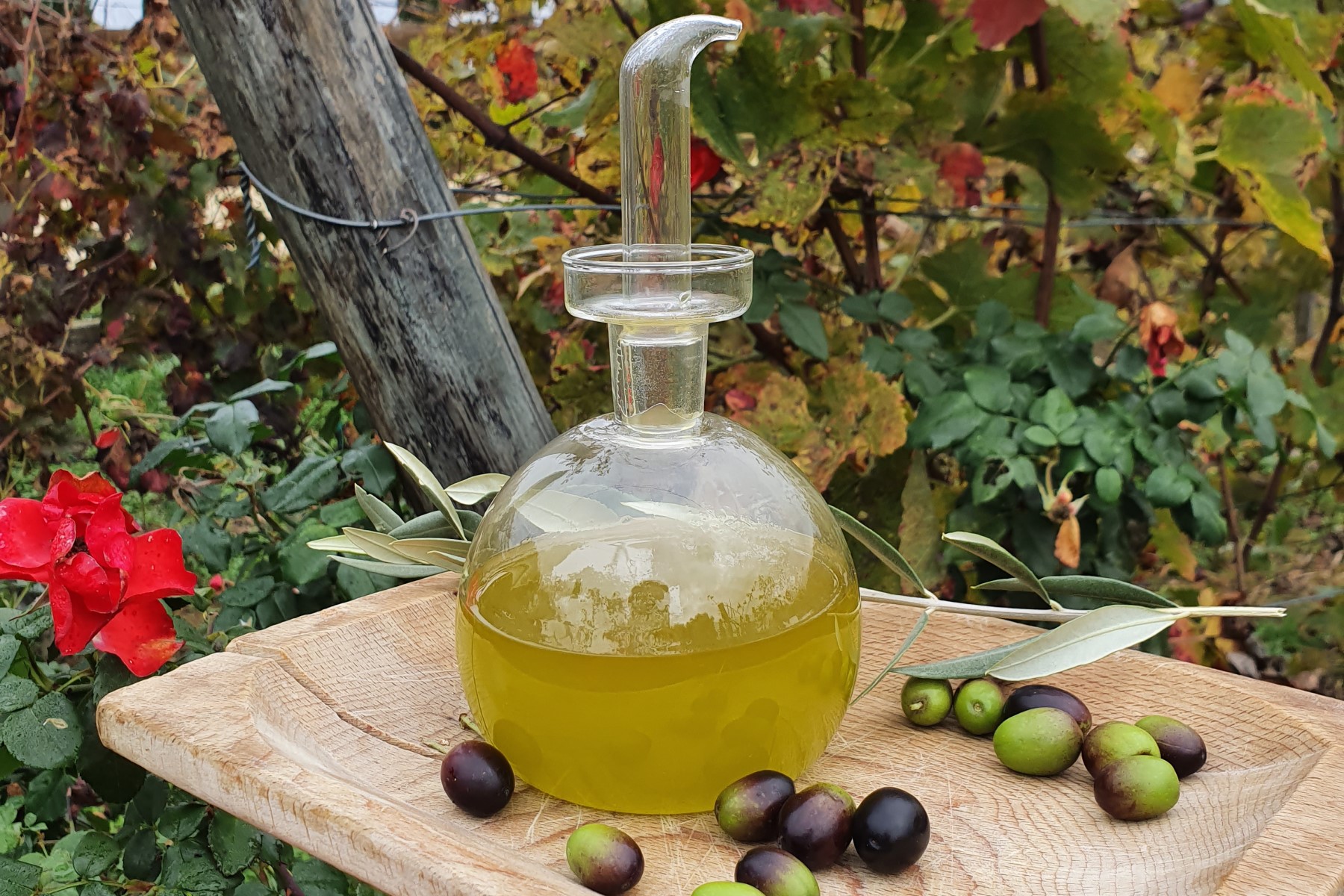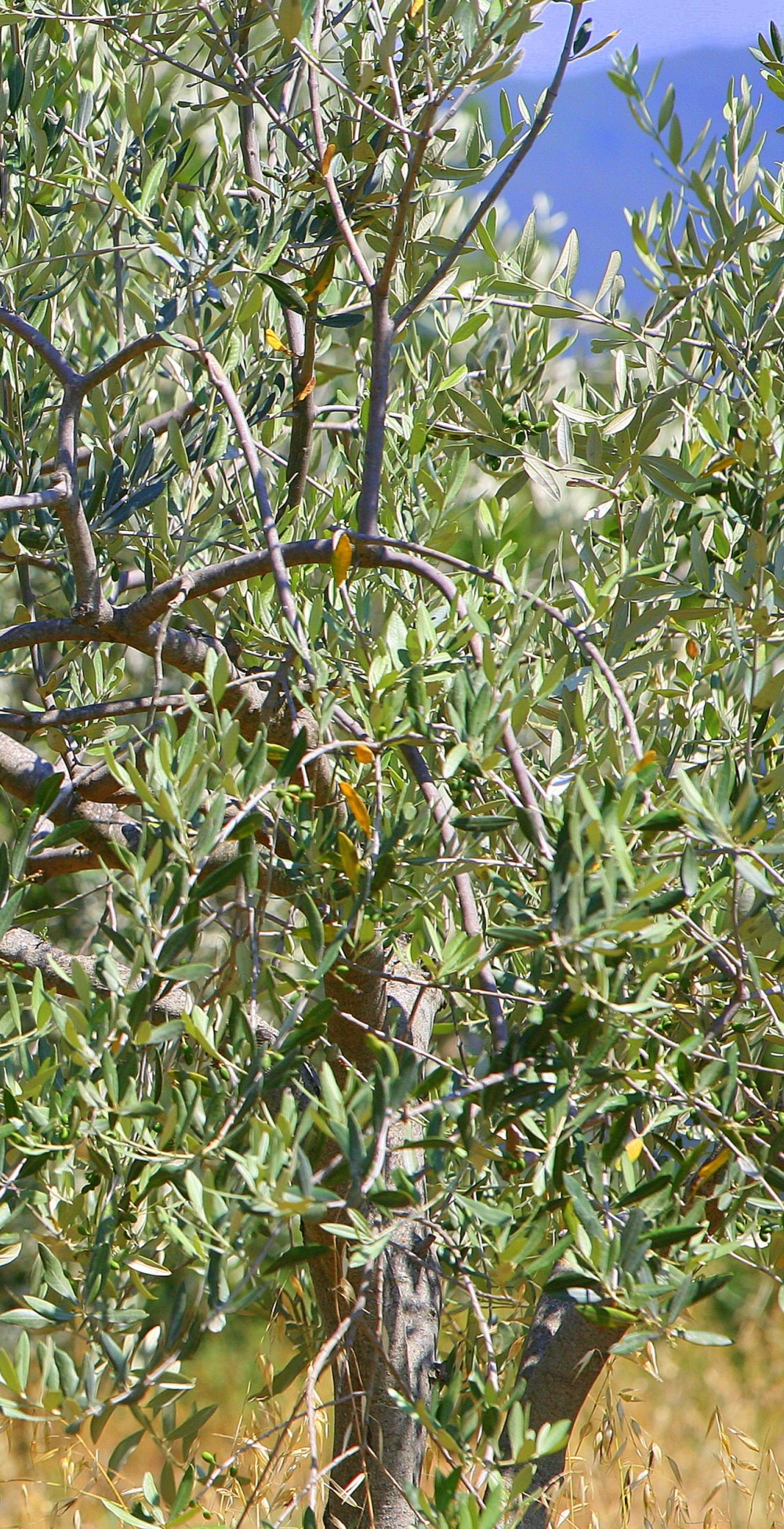
The most aromatic Italian olive oil is Tuscan
The most flavourful olive oil in Italy is known to be the olive oil from Tuscany. Our olive oil is not for frying, but a high-quality seasoning olive oil that “tastes like Italy”. Indeed, its intense aroma reminds of herbs, earth and sun. Therefore, the home of superior quality Tuscan olive oil is that kind of premium cuisine, which uses natural aromas to exalt, season and refine best raw materials.
Podere Palazzone’s organic extra virgin olive oil is of excellent quality. A product in total harmony with nature, in organic quality. Its full name would be: Olio Extravergine di Oliva Toscano, biologico, prima spremitura a freddo, i.e. first cold pressing.
Some of our olive trees are more than a hundred years old. But mainly their age is about 40 years. They are of the Pendolino, Moraiolo and Frantoio type, which produce particularly high-quality, intensely aromatic fruits. We completely refrain from using chemicals in olive cultivation. As a matter of fact, nutrient supply to the olive grove’s soil in is provided by mulching organic matter (leaves, cuttings) and horse manure. Given that horses do not chew the cud, their manure is particularly rich in undigested plant fibres and therefore especially precious. The olive grove of our Agriturismo is located on a wind-exposed hillside. Therefore, a light breeze always blows through our olive trees. Luckily, the olive fruit fly Bactrocera oleae, a dangerous pest in olive cultivation, does not like such conditions. As a result, we can do completely without chemical pest control.
Vegetation phases of olives
The work in the olive grove starts at the beginning of spring with the pruning of the trees. Basically, we shape a fertile, not overloaded, healthy and manageable tree crown. Usually, the pruning is done before Easter. From that comes the Italian tradition, to celebrate Palm Sunday with olive branches.
Our olive trees blossom all white in May. After pollination, mainly done by wind transfer of pollen from neighbouring trees, the fine petals fall off. At that time, the olive grove appears as if after a light snowfall. During the dry and warm summer in Tuscany, the olive trees enjoy a lot of sun and form the oil fruit. Harvest occurs from mid-October. Our olives do not exceed a length of 1.5 cm and their colour changes from light green to dark purple and finally black.
Inside the olive
The olive is a stone fruit that consists of approximately 75% oily pulp. Inside is the kernel, embedded in the olive pulp. Only a little, hardly soluble olive oil is contained in the kernel. On the other hand, the flesh of the olive is composed of vacuoles in which the precious oil is stored. A membrane protects them from the surrounding vegetation water. Certainly, it is crucial for top quality of olive oil, that this water does not come into contact with the oil itself. Otherwise, an oxidation process would be initiated, and the olive oil would start becoming rancid. Therefore, it is of paramount importance to leave these vacuoles intact until the moment of oil pressing. This has major consequences for harvesting technique and harvesting time.
Handpicked Italian olive oil, one of the few
In Tuscany, compared to other regions of Italy, we press olive oil quite early. At the Agriturismo Podere Palazzone, harvest starts mid-autumn. As a matter of fact, oil does not “mature” in the olive. At that time, the membranes are still elastic and intact, which means they can perfectly fulfil their protective function. Above all, however, we pick the olives by hand in order to avoid damaging the vacuoles through mechanical influences (shakers). There are only very few olive oil producers left in Italy, who pick by hand. Obviously, because it is very labour-intensive. But at the end of the day, the difference in quality justifies the extra effort.
We collect the harvested olives in ventilated boxes and within 48 hours, as long as the vacuoles are still perfectly intact, we take them to the Pomarance oil mill. An olive tree produces about 20–25 kg of olives, from which about 3 liters of oil are obtained.
Extra virgin olive oil cold pressed
Following traditional Tuscan method, the olives are first washed and crushed in single batches. Afterwards, by centrifugation the oil is separated from water, pulp and other components. The olive oil obtained in this way, gently, cold, purely mechanically pressed, is the highest quality part of the oil contained in an olive. In Italy it is called extra vergine, the paramount olive oil quality grade. Podere Palazzone’s olive oil has an extremely low acidity of just 0.03% and a peroxide value of only 0.6 meq O2/kg (milli-equivalents of active oxygen per kg of oil — an indicator of “rancidity”). This corresponds to a quality of the very first class. NB: According to labelling regulations, for extra virgin olive oil a much higher peroxide value of 20 meq O2/kg is allowed.
Italian olive oil with distinctive character
The olive oil from Podere Palazzone holiday home is characterized by its strong character, the green colour with yellow sheen and its fruity taste. It has a full olive aroma, with notes of artichoke, aubergine and pepper, and a delicious fruity bouquet. Therefore, our olive oil goes perfectly with the flavours of Mediterranean cuisine. Given the dedication and love we put in producing our olive oil, it is always an immense pleasure, on a cool autumn evening at the fireplace, remembering the bygone summer while enjoying a bruschetta, sprinkled with a few drops of freshly pressed olive oil. You are welcome to share this emotion at our Agriturismo.
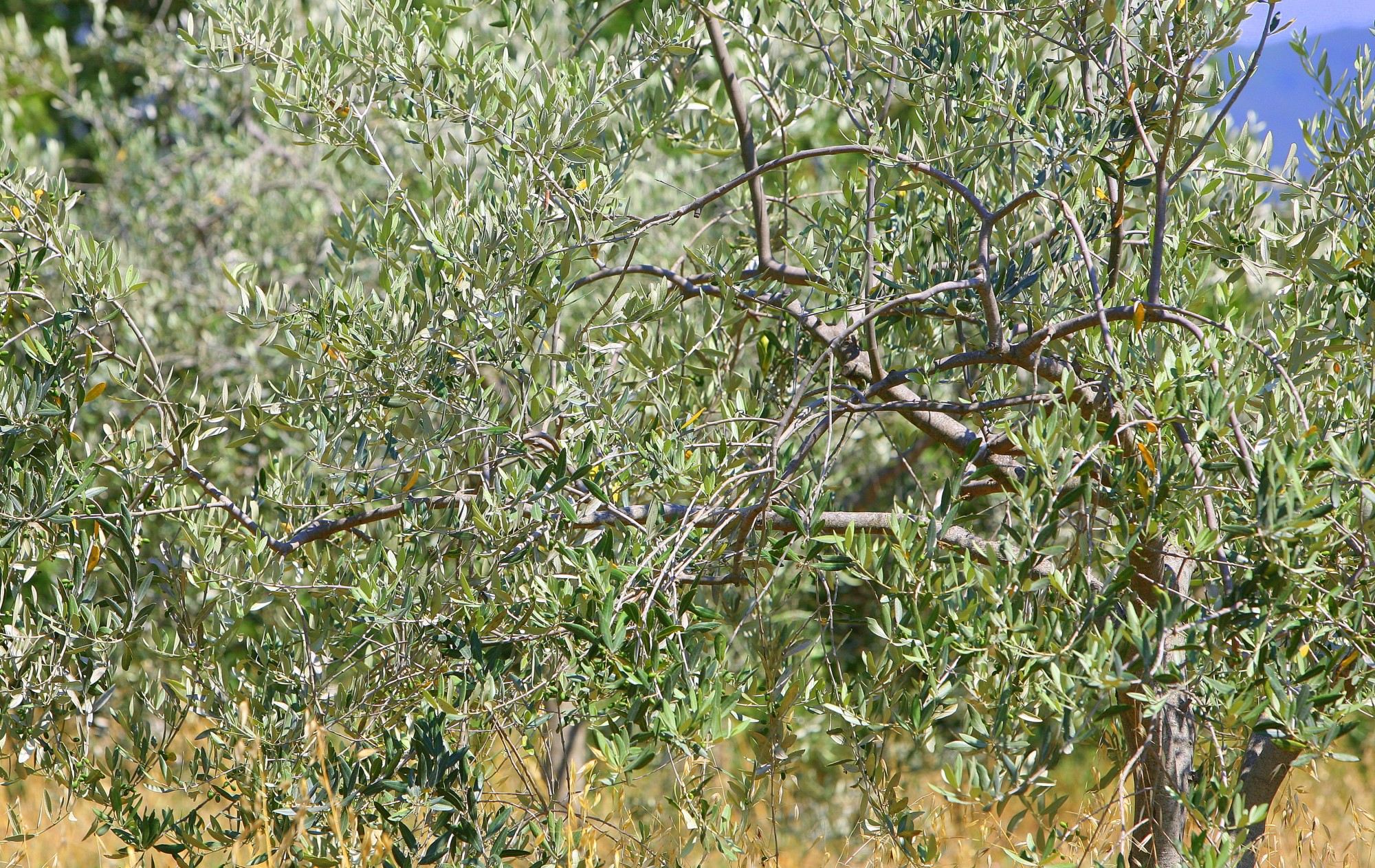
The most aromatic Italian olive oil is Tuscan
A very special Italian olive oil
The most flavourful olive oil in Italy is known to be the olive oil from Tuscany. Our olive oil is not for frying, but a high-quality seasoning olive oil that “tastes like Italy”. Indeed, its intense aroma reminds of herbs, earth and sun. Therefore, the home of superior quality Tuscan olive oil is that kind of premium cuisine, which uses natural aromas to exalt, season and refine best raw materials.
Podere Palazzone’s organic extra virgin olive oil is of excellent quality. A product in total harmony with nature, in organic quality. Its full name would be: Olio Extravergine di Oliva Toscano, biologico, prima spremitura a freddo, i.e. first cold pressing.
Organic olive oil
Some of our olive trees are more than a hundred years old. But mainly their age is about 40 years. They are of the Pendolino, Moraiolo and Frantoio type, which produce particularly high-quality, intensely aromatic fruits. We completely refrain from using chemicals in olive cultivation. As a matter of fact, nutrient supply to the olive grove’s soil in is provided by mulching organic matter (leaves, cuttings) and horse manure. Given that horses do not chew the cud, their manure is particularly rich in undigested plant fibres and therefore especially precious. The olive grove of our Agriturismo is located on a wind-exposed hillside. Therefore, a light breeze always blows through our olive trees. Luckily, the olive fruit fly Bactrocera oleae, a dangerous pest in olive cultivation, does not like such conditions. As a result, we can do completely without chemical pest control.
Vegetative phases of olives
The work in the olive grove starts at the beginning of spring with the pruning of the trees. Basically, we shape a fertile, not overloaded, healthy and manageable tree crown. Usually, the pruning is done before Easter. From that comes the Italian tradition, to celebrate Palm Sunday with olive branches.
Our olive trees blossom all white in May. After pollination, mainly done by wind transfer of pollen from neighbouring trees, the fine petals fall off. At that time, the olive grove appears as if after a light snowfall. During the dry and warm summer in Tuscany, the olive trees enjoy a lot of sun and form the oil fruit. Harvest occurs from mid-October. Our olives do not exceed a length of 1.5 cm and their colour changes from light green to dark purple and finally black.
Inside the olive
The olive is a stone fruit that consists of approximately 75% oily pulp. Inside is the kernel, embedded in the olive pulp. Only a little, hardly soluble olive oil is contained in the kernel. On the other hand, the flesh of the olive is composed of vacuoles in which the precious oil is stored. A membrane protects them from the surrounding vegetation water. Certainly, it is crucial for top quality of olive oil, that this water does not come into contact with the oil itself. Otherwise, an oxidation process would be initiated, and the olive oil would start becoming rancid. Therefore, it is of paramount importance to leave these vacuoles intact until the moment of oil pressing. This has major consequences for harvesting technique and harvesting time.
Handpicked Italian olive oil, one of the few
In Tuscany, compared to other regions of Italy, we press olive oil quite early. At the Agriturismo Podere Palazzone, harvest starts mid-autumn. As a matter of fact, oil does not “mature” in the olive. At that time, the membranes are still elastic and intact, which means they can perfectly fulfil their protective function. Above all, however, we pick the olives by hand in order to avoid damaging the vacuoles through mechanical influences (shakers). There are only very few olive oil producers left in Italy, who pick by hand. Obviously, because it is very labour-intensive. But at the end of the day, the difference in quality justifies the extra effort.
We collect the harvested olives in ventilated boxes and within 48 hours, as long as the vacuoles are still perfectly intact, we take them to the Pomarance oil mill. An olive tree produces about 20–25 kg of olives, from which about 3 liters of oil are obtained.
Extra virgin olive oil cold pressed
Following traditional Tuscan method, the olives are first washed and crushed in single batches. Afterwards, by centrifugation the oil is separated from water, pulp and other components. The olive oil obtained in this way, gently, cold, purely mechanically pressed, is the highest quality part of the oil contained in an olive. In Italy it is called extra vergine, the paramount olive oil quality grade. Podere Palazzone’s olive oil has an extremely low acidity of just 0.03% and a peroxide value of only 0.6 meq O2/kg (milli-equivalents of active oxygen per kg of oil — an indicator of “rancidity”). This corresponds to a quality of the very first class. NB: According to labelling regulations, for extra virgin olive oil a much higher peroxide value of 20 meq O2/kg is allowed.
Italian olive oil with distinctive character
The olive oil from Podere Palazzone holiday home is characterized by its strong character, the green colour with yellow sheen and its fruity taste. It has a full olive aroma, with notes of artichoke, aubergine and pepper, and a delicious fruity bouquet. Therefore, our olive oil goes perfectly with the flavours of Mediterranean cuisine. Given the dedication and love we put in producing our olive oil, it is always an immense pleasure, on a cool autumn evening at the fireplace, remembering the bygone summer while enjoying a bruschetta, sprinkled with a few drops of freshly pressed olive oil. You are welcome to share this emotion at our Agriturismo.
- All about olive oil -
Harvesting techniques to be banned
Still in the 1970s, olives were collected from the soil like fallen fruit. The overripe olives fell from the tree, were picked up from the ground, stored in the attic and pressed when needed. Nowadays, in Italy, this technique is only used in steep coastal regions. Instead, in the huge olive plantations in other areas, harvest is done with machine shakers. However, by their powerful beat the vacuoles break up, causing the rancidity described above. Of course, at the Podere Palazzone holiday home, we do not use shakers. And, obviously, such scandalous procedures as the harvest with big aspirators, usually done at night, as practiced in other countries, are completely out of the question. Because they kill hundreds of thousands of migratory birds from northern Europe, which have found a resting place in the olive trees at night. Indeed, blinded by large spotlights, they can no longer escape and end up in the huge suction harvesters.
Best olive oil is clear
Contrary to popular belief, the best olive oil is not turbid. As a matter of fact, turbidity is caused by fruit residues that have not been separated from the oil. This is a major cause for subsequent oxidation of the oil. Oxidized oil is spoiled oil, with the typical rancid taste. It is not without purpose, that nature has added ingredients such as water, olive sugar and endogenous olive enzymes to the olive fruit. In fact, these substances, which make the turbidity are there to stimulate the decay of the fruit so that the seed can germinate once fallen on the ground.
Quality grades of olive oil
In addition to the extra vergin olive oil grade of Podere Palazzone’s olive oil, there are further inferior quality grades. Cold-pressed olive oil with taste defects and an acidity of up to 2% falls into the category “virgin olive oil”. If a cold-pressed olive oil has even greater deficiencies, it is mixed with refined olive oil in an industrial process. The latter one is obtained through pressing with heat and chemical solvents. Such a process enables a further oil yield and leaves undesirable chemical residues in the oil. Therefore, this oil then goes through purification in an oil refinery. Such a mixture is sold under the name “olive oil”. Finally, further chemical treatment of the olive pomace, i.e. the residue from cold or warm pressing, extracts the remaining, practically tasteless oil rest. Following a further refining, this results in “olive pomace oil”, which is usually added to inferior batches of virgin olive oil.
Olive oil tasting
If you want to delve deeper into the subject, you are cordially invited to our themed dinner on olive oil. We will explain the cultivation, harvesting and processing techniques and show you the differences to other cultivation areas and other quality categories. We will guide you through the olive oil tasting and surprise you with delicious specialties based on our organic extra virgin olive oil.




